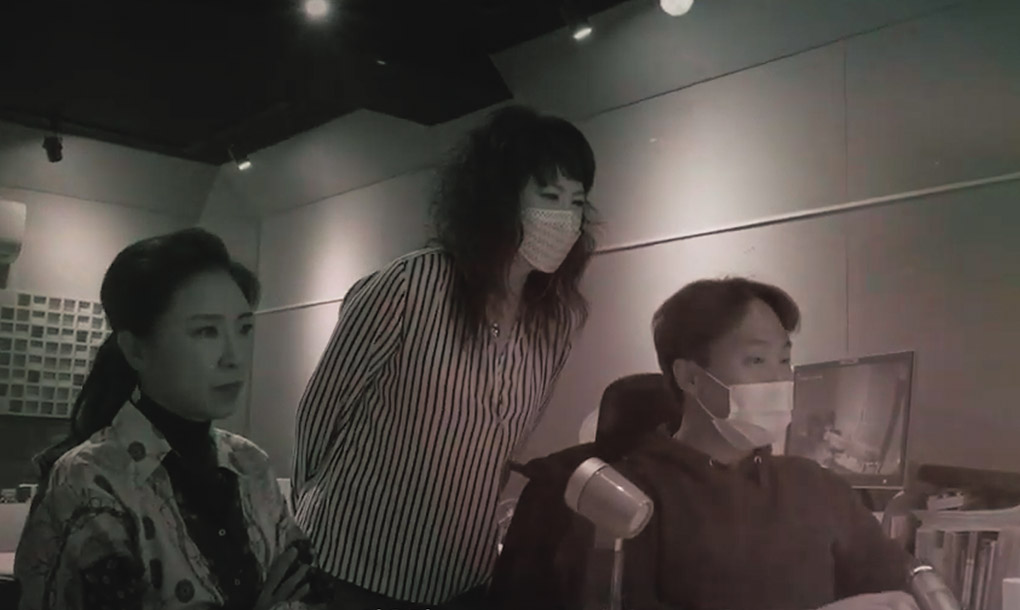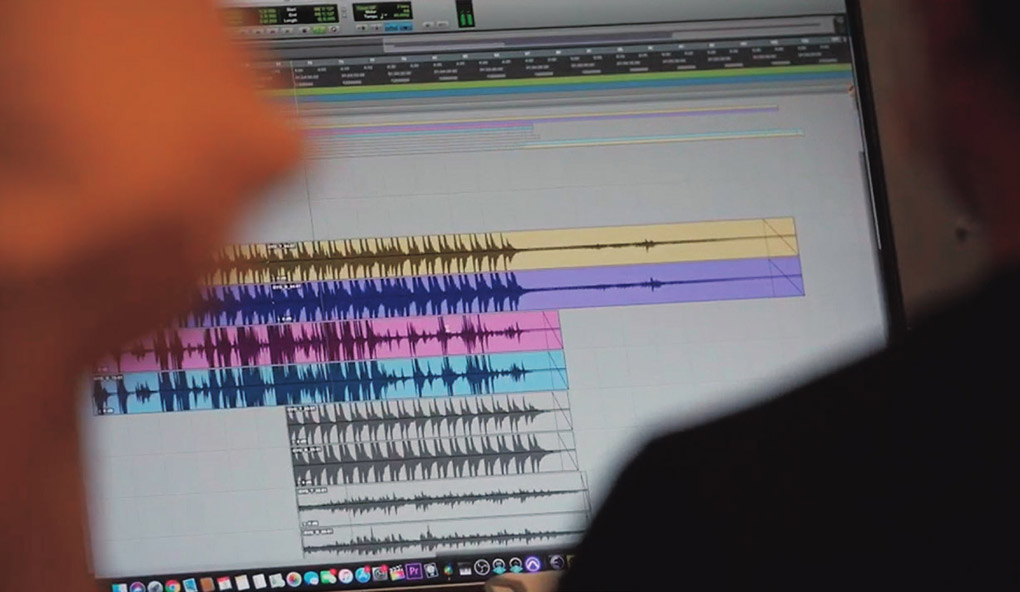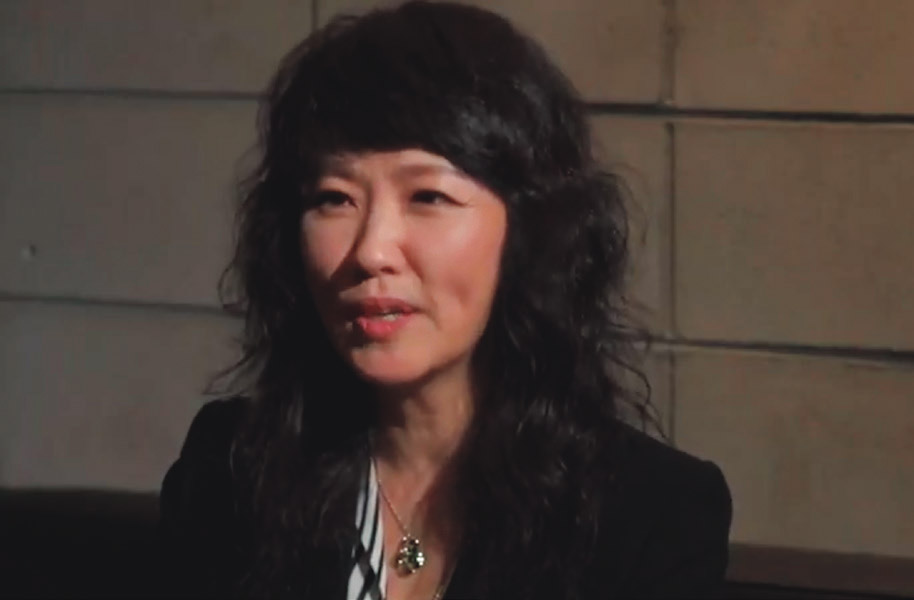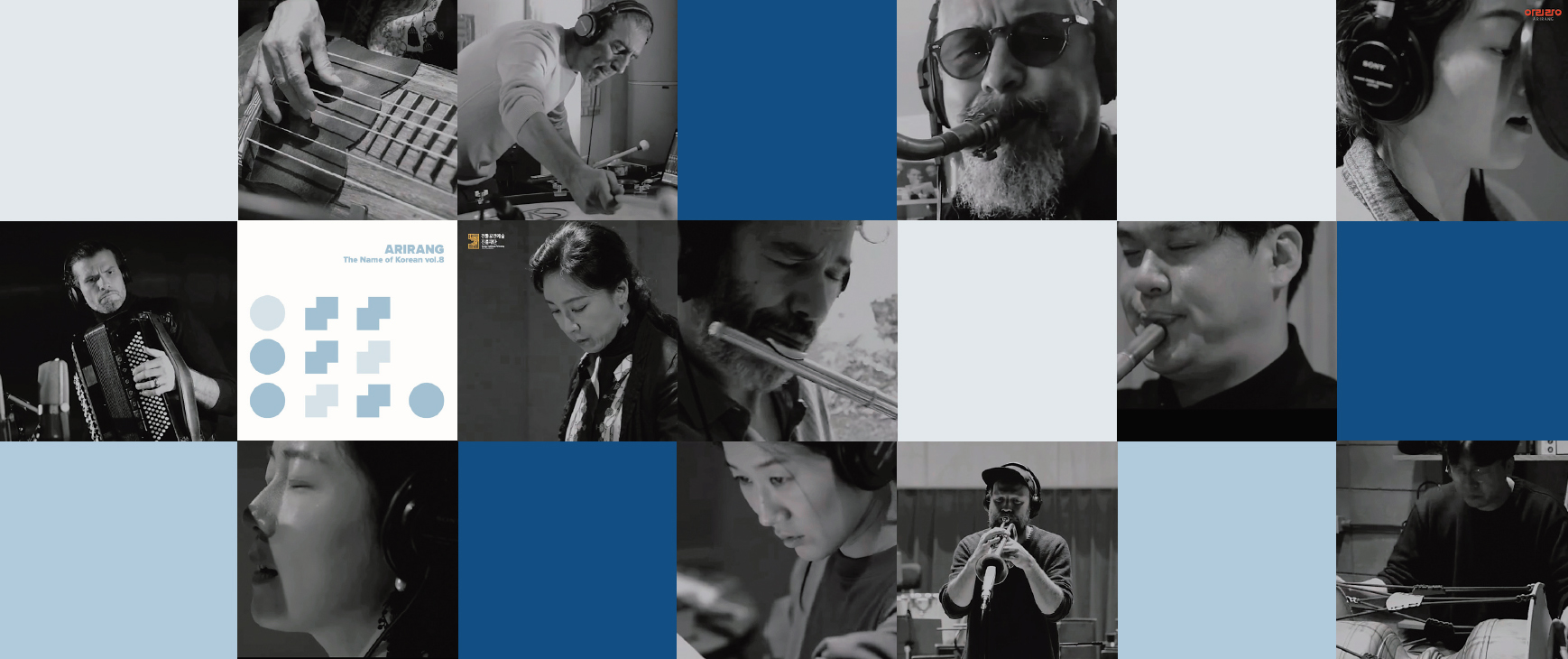Installation artist Choi Jeong-hwa isn’t particularly pleased about being called an “artist.” With a self-identity akin to a “designer,” Choi considers flea markets and traditional street markets to be more artistic, in many ways, than any art museum.

Nah Youn-sun (standing), music director of “ARIRANG, The Name of Korean vol. No. 8,” an album that explores contemporary interpretations of the most famous Korean folk song, works at a recording studio. At left is geomungo player Heo Yoon-jeong. © Korean Traditional Performing Arts Foundation

Rather than impeding the musicians, working remotely on the album prompted deeper concentration into one another’s input and the overall sound.

To Nah Youn-sun, “Arirang” is a song that motivates a restart in trying times.
Watching Nah Youn-sun on stage, one gets the feeling that the singer is a unique and peerless instrument. The melodies that flow over her audiences are both delicate and keen, seeping into the heart of each listener. “Momento Magico,” “Asturias,” “Breakfast in Baghdad,” “Hurt” – all are opportunities to experience the ingenious music that Nah can craft with her vocal chords.
Recognized as one of Europe’s foremost jazz singers, Nah regularly commands stages at the world’s most prestigious jazz festivals and possesses numerous accolades, including an Officer of the Order of Arts and Letters from the French Ministry of Culture. Since signing with German record label ACT in 2008 and then with American label Warner Music Group in 2019, Nah has made her superlative presence felt.
Rather than American blues music, it seems to be “Arirang,” Korea’s best known folk song both at home and abroad, that constitutes the main artery of this Paris-based jazz vocalist’s musical influence. “When I sing a sad chanson, I’ll find myself singing it much, much sadder than the original version,” she once mused. “You know the way of Koreans; when we lose someone close to us, we cry as if the world has ended. In a way, that’s the sensibility I’ve brought to my songs.”
Nah’s seventh and eighth albums, titled “Same Girl” and “Lento,” respectively, both included versions of “Arirang.” Nah also sang a rendition of the song during the closing ceremony of the 2014 Sochi Winter Olympics. This time, she’s taken on the role of music director for “ARIRANG, The Name of Korean vol. 8,” an album structured entirely around the folk song, which historically has had a slew of variations. Thirty-five minutes in length, the album includes six brand-new versions of “Arirang,” each a collaboration by artists from different countries, such as a piece by gayageum player Park Kyung-so [Kyungso Park] and British saxophonist Andy Sheppard, and another by geomungo player Heo Yoon-jeong [Yoon Jeong Heo] and Norwegian trumpeter Mathias Eick.
What’s different about this version of “Arirang”?
Well, as you know, we all had a particularly difficult year last year because of COVID-19. Musicians, producers, agencies – we all found ourselves in dire straits as live performances more or less disappeared. Still, there wasn’t a single one of us who said, “It’s over.”
Instead, the catchphrase going around was, “Stay creative,” or “Keep creative.” I learned a lot from this positive attitude. I didn’t want to sing some bright and cheery “Arirang” of contrived hope. I spurred us all on to try and make the world’s saddest, most beautiful “Arirang,” capturing today’s world as it actually is. Everyone agreed and threw themselves into that task, and ultimately, the process of making this album was quite therapeutic for us all.
What type of musicians did you want to work with?
I wanted musicians who were open to collaboration, and who would be able to grasp what “Arirang” really is. Andy Sheppard, for example, had already worked with Park Kyungso once as part of England’s “K-Music Festival.” Mathias Eick and I have actually toured together as a duo, so I know he’s a truly multitalented instrumentalist. Trumpet, contrabass, drum, piano, even electronic instruments – he can do it all.
[Through her years of frequent tours across Europe, Nah has played a key role in establishing “Arirang” in jazz repertoire. For example, in their 2017 album “Good Stuff,” Finland’s Iiro Emil Rantala (piano) and Sweden’s Ulf Wakenius (guitar) included a track titled “Seoul,” which built on the melody of the Miryang regional version of “Arirang.” Beginning in the early 2000s, Wakenius became deeply familiar with renditions of “Arirang” from Miryang, Jindo and Jeongseon while working closely with Nah.]
How do foreign musicians perceive this Korean folk song?
Well, first they tend to really like the melody itself. I actually played all the various regional versions of “Arirang” for Samuel Blaser, the Swiss trombone player who collaborated on “ARIRANG-19” with the duo CelloGayageum. He was so struck by them all that he said he was overflowing with inspiration and sent me a veritable stream of reinterpretations.
Where do you think this power comes from?
I consider it to be a power inherent to minyo, or folk song. And for foreigners, of course, it has a kind of novelty. It’s like coming across an entirely new type of music, so it can spark really strong interest. “Arirang” has simple bones, but there’s something singular in its rhythms.
This makes it possible for each musician to try out whatever interests them the most – and all the more so when it comes to jazz musicians in particular. After all, if a jazz musician feels a hundred different things, they can express them a hundred different ways, one by one. They’re quite interested in irregular time signatures with 5 or 7 beats.
This album was made remotely. Did that cause any problems?
The situation was such that we were all physically very distant from one another and the pandemic made it impossible for us to get together. So we started with the Korean musicians, each creating and recording their new interpretations of “Arirang.” Then they sent that – either direct- ly or through me – to their musical collaborators abroad via email, internet messenger or SNS. And then those far-flung musicians would listen to the file and send back their own instrumentation.
Naturally, this wasn’t an easy, one-step affair. We repeated this process many times, reworking each piece back and forth until everyone was satisfied with the result. But other than the time difference, it was just like any other collaborative songwriting process. For a few of the pieces, I did the final mastering myself.
How was 2020 without your usual travel?
Well, I’ve never been able to spend so much time with my parents. Before, my home in Korea was almost like a hotel where I would stay for short stretches before leaving again. To be completely honest, I dealt with some depression and anxiety, too. Out of nowhere I’d be struck with thoughts like, “How far have I actually come in this life?” I’m rather sensitive, and the situation as a whole really pained me. Some people around me advised that, in times like these, social media can be a good tool, but I never actually acted on that.
At the start of the pandemic, instead of listening to music, I just focused on cleaning, organizing and spending time with my parents. When I started listening to music again, I essentially rediscovered the music of Europe. Somehow, every album felt like the soundtrack to a movie.
I’d felt exhilaration before when listening to Stevie Wonder or Herbie Hancock, but just sitting in my own home and slowly listening to all these albums in their entirety, it came to me how music, too, can tell one long, full story.
This kind of arc is something one always considers, of course, when sequencing a track list, but this became an opportunity for me to really understand on a deeper level how important that can be. It was also a period where I really felt anew how much actual healing power there is to be found in art and in music. Directing this album, I told everyone, “Don’t make these songs short. Make them as long as possible, say every last thing you want to say.”

The artists who collaborated for “ARIRANG, The Name of Korean vol. 8” are: (from left, first row) geomungo player Heo Yoon-jeong, drummer Michele Rabbia (Italy), saxophonist Andy Sheppard (England), Gyeonggi minyo vocalist Kim Bora (Korea); (second row) accordion player Vincent Peirani (France), geomungo player Heo Yoon-jeong, flutist Joce Mieniel (France), daegeum player Lee Aram (Korea); (third row) pansori vocalist Kim Yulhee (Korea), gayageum player Park Kyung-so (Korea), trumpeter Mathias Eick (Norway) and percussionist Hwang Min-wang (Korea). Not pictured are Korean duo CelloGayageum and Swiss trombone player Samuel Blaser. © Korean Traditional Performing Arts Foundation
“‘Arirang’ has simple bones, but there’s something singular in its rhythms. This makes it possible for each musician to try out whatever interests them most – and all the more so when it comes to jazz musicians in particular.”
It seems this album could be a nice accompaniment to activities like yoga or home workouts.
Sure, that might be nice, too. You don’t necessar- ily have to be fully focused as you listen. It’s pleasant music for doing the dishes or puttering around the house, or maybe even doing nothing at all. Though for people who have the time and space, I also recommend going deeper and listening with full concentration. Then it can feel almost like taking in the narrative arc of a feature film.
What are your plans for 2021?
I’m in the process of preparing my second album with Warner Music. It will be my 11th album overall and I expect to start working on it soon in New York and L.A. We plan to actually get into the recording studio in April. I’ve been considering returning to acoustic tracks, but nothing’s decided yet. I’m looking forward to a new format of music. And if the COVID-19 situation improves enough, there are around 10 performances across Europe that we have booked in March. I sincerely hope that this year has happier days in store for all musicians, artists and people.